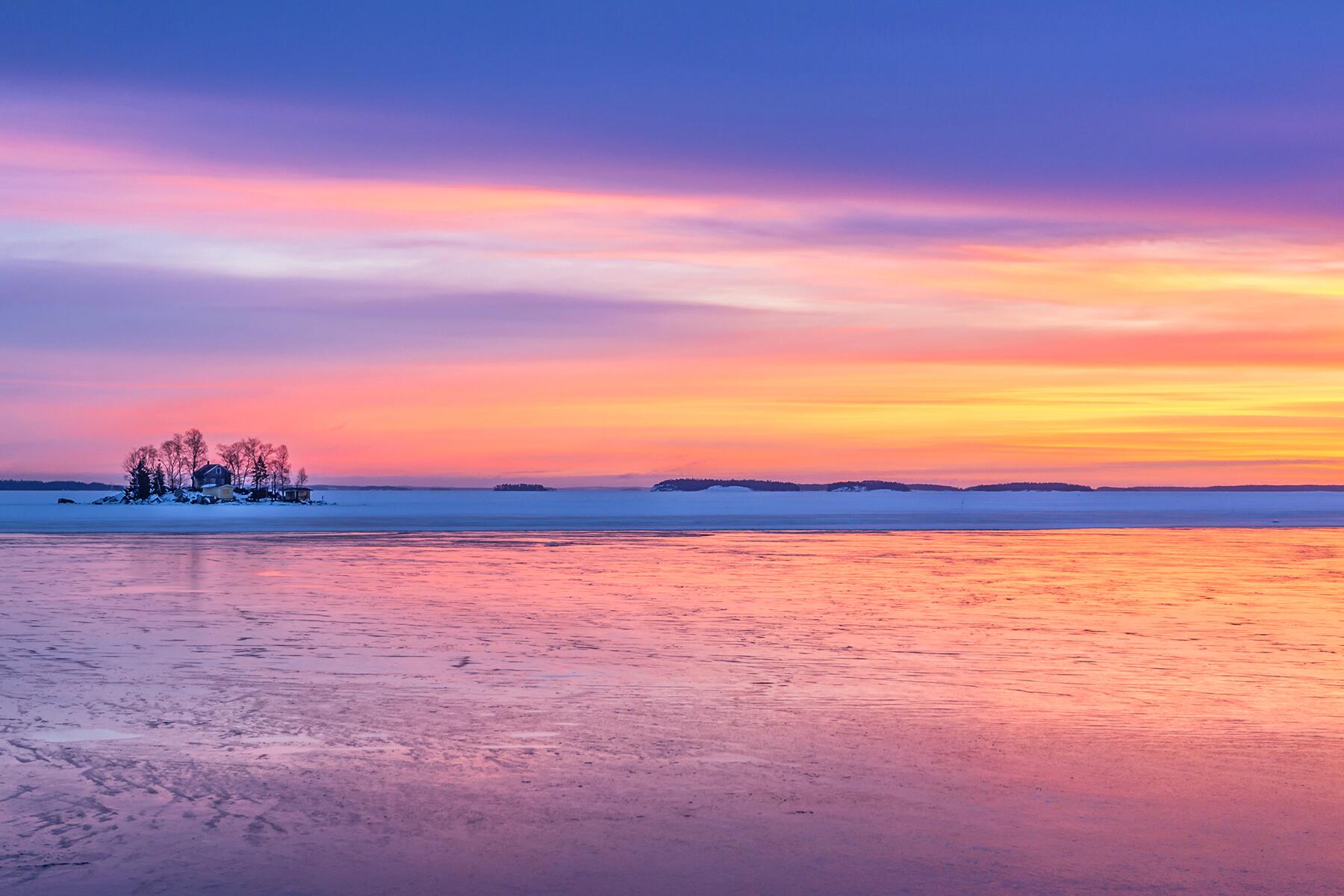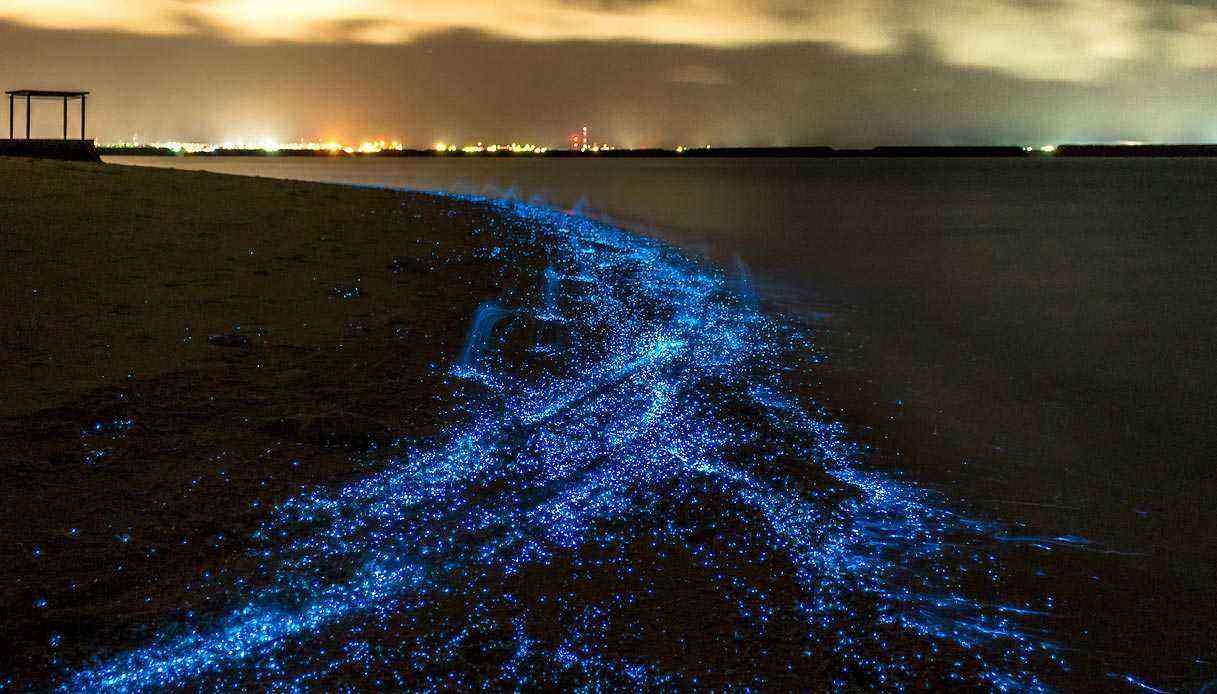- ⁄
- Travel News
- ⁄
- Outdoors
Glittering oceans, shimmering caves, and shining trees—all created by critters in the darkness of night.
Imagine moving through a sea of sparkling blue champagne, with the dazzling stars in a dark night sky above. Or submerging yourself in a cave glimmering with neon yellow light. Believe it or not, these natural wonders exist. And even more amazing, they are the handiwork of animals—landlubbing fireflies, glowworms, and millipedes, and undersea plankton and jellies (to name a few)—that create a unique biochemical emission of light. Here are some of the world’s best places to catch the amazing natural light shows of bioluminescence.
Top Picks for You
Glowworms
WHERE: Waitomo Glowworm Caves, New Zealand
Wander inside Waitomo Glowworm Caves, about two hours south of Auckland, and you’re treated to a fairytale realm of glowing blue icicles hanging from the grotto ceiling. Except they’re not icicles. They’re the mucus of millions of Arachnocampa flava, a type of fungus gnat more commonly called glowworms (though they’re not worms), whose larvae cling to the rock walls and hunt with long strands of phlegm. Insects are attracted by the light and, before they know it, become stuck in the sticky mess.
How to Visit: Schedule a tour and pick up info at the Glowworm Caves Visitor Centre in Waitomo, New Zealand.
INSIDER TIPThere’s more to the caves than glowworms. Adrenaline junkies enjoy black-water rafting, tubing, and jumping off waterfalls in the pitch black darkness.
Crystal Jellies
WHERE: West Coast of the U.S.
If you see a glowing, green-blue blob with long graceful tentacles jiggling in the waters off the West Coast of the United States and Canada, don’t be surprised. You’ve spotted Aequorea Victoria, a jelly that famously produces bioluminescence. Pick one up (they don’t sting) and shake it gently to see a ring of bioluminescent light up around its marginal ring. About a third are believed to produce this lustrous light, though no one knows exactly why they do it—probably to scare off enemies.
INSIDER TIPIf you don’t want to encounter crystal jellies in the wild, see them behind the glass at several aquariums, including Monterey Bay Aquarium.
Recommended Fodor’s Video
More Glowworms
WHERE: Tamborine Mountain National Park, Australia
The Land of Oz has its own version of glowworms at Tamborine National Park. Take a nighttime bush walk in the park, arriving at the cave just in time to see its ceiling, rocky overhangs, and steep earth banks aglow with brilliant blue-green lights. Just as at Waitomo Cave, the natural phenomenon is created by the larvae stage of a small primitive fly called Arachnocampa flava. What you’re seeing is the reaction of four chemicals within the glow-worm’s body in an attempt to lure prey—midges, mosquitos, mayflies—with their translucent bioluminescence.
The warmer, wetter months of December to March are the best times to spot the glowworms. And these moisture-loving critters love nothing better than a rainy day when they’re at their shining best. Bring an umbrella on your trek.
How to Visit: The glowworm caves are located at Cedar Creek. Tours last about half an hour.
Fireflies
WHERE: Great Smoky Mountains National Park, Tennessee
Fireflies are the world’s most celebrated bioluminescent organisms, beloved by kids everywhere who love to chase their flitting light. The fireflies in Great Smoky Mountains National Park are extra special due to their synchronicity. During two weeks a year, they flash all at once, zillions of them, like long strands of Christmas tree lights. Scientists aren’t exactly sure why they do this, though it probably has to with competition among men to attract females by being the first to flash.
The synchronistic event takes place during two weeks toward the end of May and beginning of June. Check with the National Park Service for specific dates.
How to Visit: This is a popular event so be sure to plan ahead. Shuttles leave the Sugarlands Visitor Center parking area to take visitors to the Elkmont viewing area. All parking passes are distributed via a lottery system. Learn more at the National Park Service’s FAQ page.
Dinoflagellates
WHERE: San Juan Island, Washington
In tucked-away coves protected from wind and nourished by a strong tidal exchange in the Puget Sound, bioluminescent plankton called Noctiluca scintillans gather in abundance, providing a dramatic show to anyone willing to paddle into the darkness. All is quiet but for the serene splash of water. And then, as if by magic, silvery blue-green light appears, swarming around your paddle and swirling in the disturbed waters. If you’re with a group, the line of kayaks creates long streaks of luminous color beneath and behind you.
How to Visit: Discovery Sea Kayaks offers excellent guided kayak tours.
INSIDER TIPA favorite viewing spot is along the North Bay shoreline of San Juan Island, near Friday Harbor’s Jackson Beach. Summer is the best time to experience the bioluminescence—always on a crescent or new moon night.
Bioluminescent Plankton
WHERE: Maldives
What’s could be more romantic than a moonlit stroll on the beach? The answer is an algae-lit stroll. In the Maldives, bioluminescent algae (also known by the precious nickname of “sea sparkle”) is washed ashore, creating a breathtaking glow-in-the-dark effect that paints the length of the shoreline shimmer in shades of shimmering, blue light.
More Dinoflagellates
WHERE: Luminous Lagoon, Trelawny, Jamaica
Thirty minutes from Montego Bay, millions of dinoflagellates glow brightly when disturbed, making the lagoon sparkle and glisten. What makes this bay extra special, however, is how it outlines fish and other undersea organisms of the shallow bay in eerie light. And here, you’re allowed to jump into the waters, where you’ll feel as if you’re swimming in a star-filled universe.
How to Visit: Plenty of tour operators (like Glistening Waters) depart from the Glistening Waters Marina. Be warned: The tours can be crowded.
INSIDER TIPBe sure to visit on clear, new moon nights. The glowing experience is dampened by the full moonlight as well as by rain (due to the shallowness of the water).
Plankton, Comb Jellies, and Fireworms
WHERE: Salt River Bay National Historic Park and Ecological Preserve, St. Croix
St. Croix offers not one but three bioluminescent delights in Salt River Bay: plankton (dinoflagellates), comb jellies, and fireworms—all best seen by kayak. As you glide through the raven-black waters, the marine plankton sparkles like a galaxy of stardust, while jellyfish lurk just beneath the water surface, resembling neon green glow sticks. But it’s the fire worms that take the bioluminescent cake. In the nights following the full moon, swarms of female Odontosyllis Enopla (more commonly called the Bermuda fireworm) rapidly swim to the water’s surface and emit a bright green light to attract mates. For almost an hour, the water shimmers with light, accompanied by a hissing sound. Then suddenly, the ritual ends and all is black.
How to Visit: Bush Tribe Eco Adventures offers evening trips. Sea Thru Kayaks is the only tour featuring clear-bottom kayaks for a true immersive experience.





